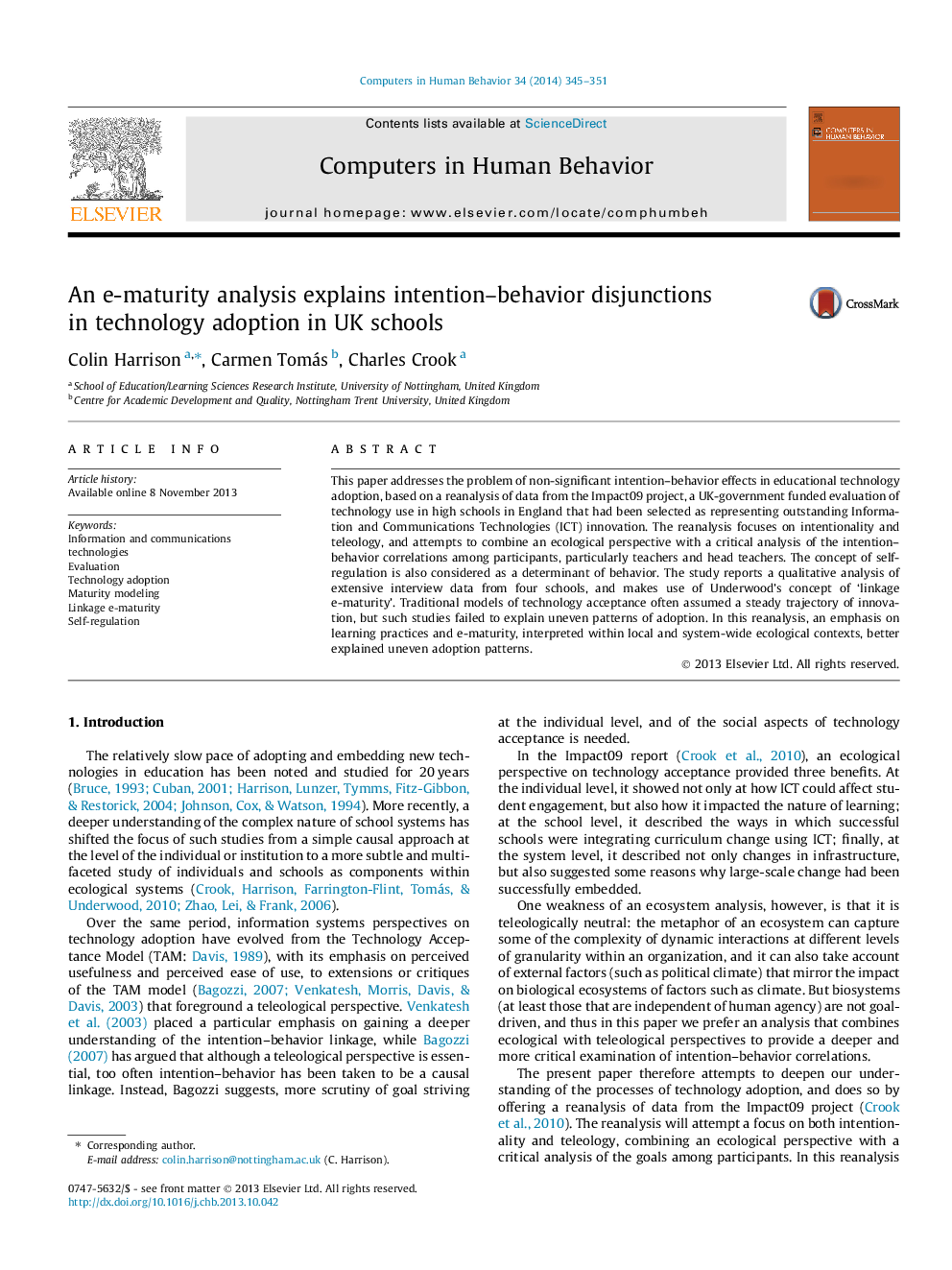| Article ID | Journal | Published Year | Pages | File Type |
|---|---|---|---|---|
| 350602 | Computers in Human Behavior | 2014 | 7 Pages |
•Presents a reanalysis of the Becta Impact09 project results.•An ecological perspective leads to deeper understanding of technology adoption.•Underwood’s ‘linkage’ e-maturity model provides additional granularity on adoption.•Conflicting intentionality vectors are shown to create barriers to change.•Bagozzi’s ideas on self-regulation explain some intention–behavior discrepancies.
This paper addresses the problem of non-significant intention–behavior effects in educational technology adoption, based on a reanalysis of data from the Impact09 project, a UK-government funded evaluation of technology use in high schools in England that had been selected as representing outstanding Information and Communications Technologies (ICT) innovation. The reanalysis focuses on intentionality and teleology, and attempts to combine an ecological perspective with a critical analysis of the intention–behavior correlations among participants, particularly teachers and head teachers. The concept of self-regulation is also considered as a determinant of behavior. The study reports a qualitative analysis of extensive interview data from four schools, and makes use of Underwood’s concept of ‘linkage e-maturity’. Traditional models of technology acceptance often assumed a steady trajectory of innovation, but such studies failed to explain uneven patterns of adoption. In this reanalysis, an emphasis on learning practices and e-maturity, interpreted within local and system-wide ecological contexts, better explained uneven adoption patterns.
